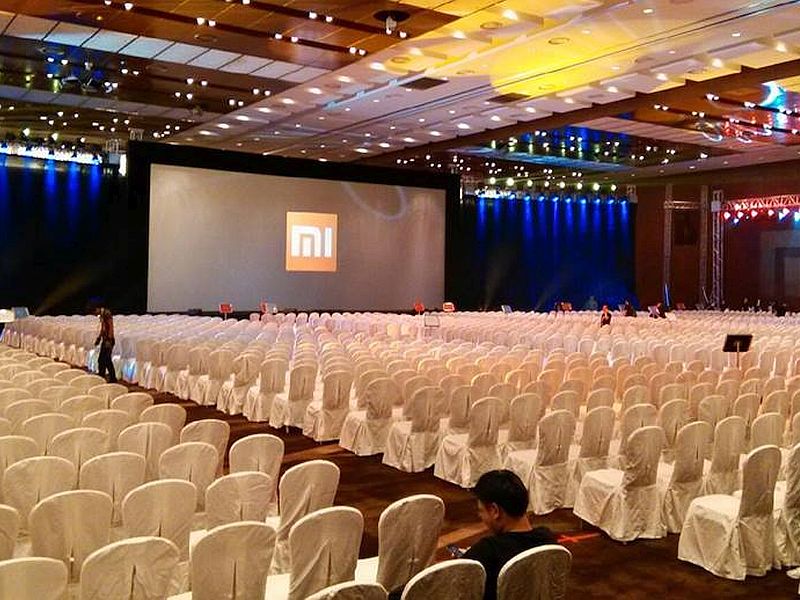- Home
- Mobiles
- Mobiles Opinion
- Xiaomi From China's Apple to China's Samsung?
Xiaomi - From China's Apple to China's Samsung?

To understand this, we need to look at Xiaomi's smartphone business. At the end of 2014, Xiaomi registered a massive 336 percent year-on-year increase in its smartphone sales, according to Gartner. This further continued through the first half of 2015 as Xiaomi reported that it sold 34.7 million smartphones in the first six months of 2015.
The Chinese company, which was in its initial days pegged as maker of affordable Android alternatives to Apple's iPhones, also received valuation estimated to have reached $45 billion (roughly Rs. 2,84,454 crores) and raised $1.1 billion (roughly Rs. 6,999 crores) by end of 2014.
But IDC reported a dip in smartphone shipments for the first time in China leaving many to believe that smartphone manufacturers, including Xiaomi, may be reaching saturation.
During the same time Xiaomi launched more smartphones and it also unveiled an array of devices across various segments. Although Xiaomi had built up a lot of demand with its Mi and Redmi range of devices, the low prices meant profit margins are reportedly thin too, and this meant Xiaomi had to expand beyond its smartphone business.
Xiaomi earlier this year, unveiled its mi.com online store in the United States apart from France, Britain and Germany, where it also sells accessories. The Chinese company this year also started making smartphones in Brazil for sale locally, which was the first major step beyond Asian markets.
The company unveiled the Mi band, its first wearable fitness tracker, priced aggressively at $13 (roughly Rs. 790), and was released in various markets including India. By end of 2014, Xiaomi also made a move in the Internet of Things (IoT) sphere in China with the launch of Internet-connected Mi Air Purifier priced at CNY 899 (roughly Rs. 8,900) as well as the Mi Water Purifier, priced at CNY 1299 (roughly Rs. 13,300).
Continuing the spree, Xiaomi launched several television models under the Mi TV series in China, apart from the Yeelight bedside lamps priced at CNY 249 (roughly Rs. 2,500). The Mi Power Bank portable chargers are yet another type of product on offer, and Xiaomi also released Mi Wi-Fi nano wireless routers alongside the Mi USB Fan and Mi LED light.
Challenging companies like GoPro, Xiaomi also unveiled action camera named Yi Action Camera, priced at CNY 399 (roughly Rs. 3,900). Some of the other products announced by Xiaomi include the smart shoes and crayon-like Mi Rainbow 5 AA batteries.
In mid-October, Xiaomi also launched its first two-wheeled, self-balancing, and battery-powered electric vehicle, named Ninebot mini.
The various launches from Xiaomi and expansion into e-commerce may seem like a well-thought out plan from the company but it runs the risk of losing the singular focus on products and launches that helped it become "China's Apple". In fact, Xiaomi is starting to look more and more like another consumer giant - Samsung (not that's there's anything wrong with it).
The South Korean company went from being a consumer electronics giant to ruling the smartphone segment. It ended being arguably the most successful part of Samsung. However, things have turned upside down for the company. Samsung has a history of releasing products that catered to almost all tastes and it did so with smartphones as well - but not all of them were successful. This resulted in Samsung's profits fluctuating dangerously as the company struggled on multiple fronts, instead of concentrating its focus, though, granted, that's an oversimplification of things.
If we compare Apple and Xiaomi, we can see obvious differences in their approach. Apple has never been a budget player, which is one of the biggest differences between the two. The Cupertino-based company has its own army of Apple fans built over years across different markets and various launches including iPhones, iPads, iPod touch, Macbooks, iMacs, Apple TV, and, most recently, the Apple Watch.
But there are some similarities too - Xiaomi had built its reputation by launching one phone at a time, offering great value for the price. While it might have been offering a budget product, the design and build quality Xiaomi's phones offered was higher than what the existing brands were willing to offer. And, like Apple, Xiaomi offered a complete solution of hardware and software, since Google Play isn't a factor in China. Xiaomi's MIUI and Mi Store were as important as the hardware in its success story.
But while Xiaomi has been hugely successful in China the response in other countries has been less heartening for the firm. Some countries like India see the phone sell out in minutes, but if the total stocks are low, then this doesn't really help the company much.
In turn, the company seems to be taking a Samsung-like approach now, and making something for everyone. The question is whether it can pull off being a jack-of-all-trades. It's a difficult tightrope, and one that few brands have managed as well as Samsung.
So far, Xiaomi's product catalog is still relatively "curated", but as the brand keeps adding products to the portfolio, it's starting to look a little random. Is Xiaomi China's Apple, or China's Samsung? Presumably, the company would rather be thought of as its own entity, and will try bring about a mix of different products that actually give the consumers what they want.
Catch the latest from the Consumer Electronics Show on Gadgets 360, at our CES 2026 hub.
Related Stories
- Samsung Galaxy Unpacked 2025
- ChatGPT
- Redmi Note 14 Pro+
- iPhone 16
- Apple Vision Pro
- Oneplus 12
- OnePlus Nord CE 3 Lite 5G
- iPhone 13
- Xiaomi 14 Pro
- Oppo Find N3
- Tecno Spark Go (2023)
- Realme V30
- Best Phones Under 25000
- Samsung Galaxy S24 Series
- Cryptocurrency
- iQoo 12
- Samsung Galaxy S24 Ultra
- Giottus
- Samsung Galaxy Z Flip 5
- Apple 'Scary Fast'
- Housefull 5
- GoPro Hero 12 Black Review
- Invincible Season 2
- JioGlass
- HD Ready TV
- Laptop Under 50000
- Smartwatch Under 10000
- Latest Mobile Phones
- Compare Phones
- Red Magic 11 Air
- Honor Magic 8 RSR Porsche Design
- Honor Magic 8 Pro Air
- Infinix Note Edge
- Lava Blaze Duo 3
- Tecno Spark Go 3
- iQOO Z11 Turbo
- OPPO A6c
- Lenovo Yoga Slim 7x (2025)
- Lenovo Yoga Slim 7a
- Lenovo Idea Tab Plus
- Realme Pad 3
- Moto Watch
- Garmin Quatix 8 Pro
- Haier H5E Series
- Acerpure Nitro Z Series 100-inch QLED TV
- Asus ROG Ally
- Nintendo Switch Lite
- Haier 1.6 Ton 5 Star Inverter Split AC (HSU19G-MZAID5BN-INV)
- Haier 1.6 Ton 5 Star Inverter Split AC (HSU19G-MZAIM5BN-INV)







![[Sponsored] Haier C90 OLED TV | Dolby Vision IQ, 144Hz OLED and Google TV in Action](https://www.gadgets360.com/static/mobile/images/spacer.png)









